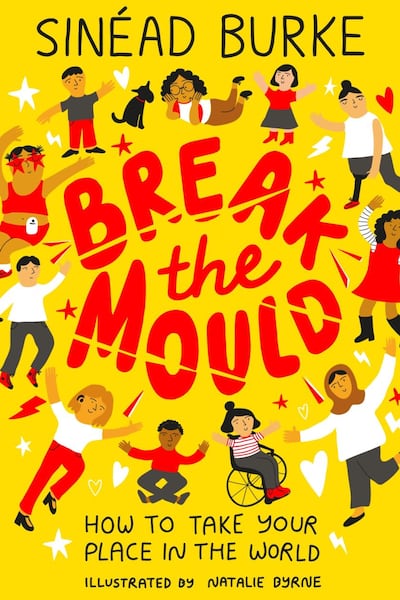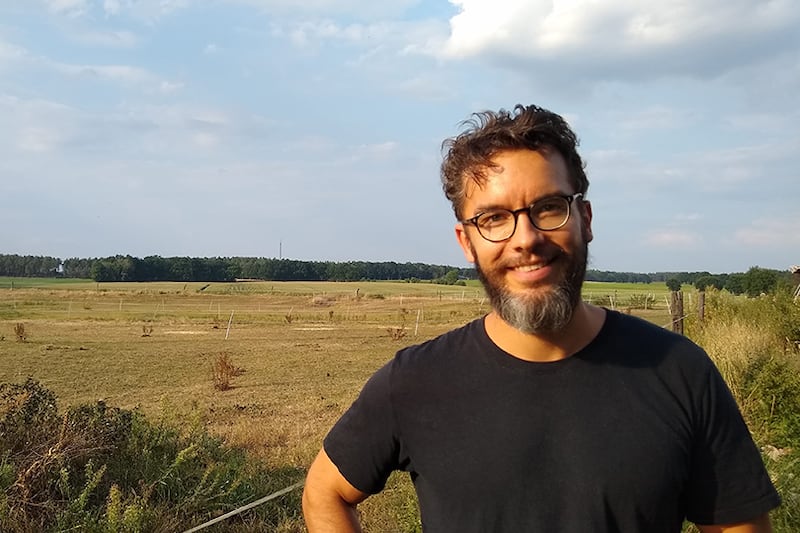“Children don’t see difference”. It’s a common phrase, but I feel it needs updating.
From my experiences of being a primary school teacher and a disabled woman, it’s not that children don’t see difference, or that they can’t acknowledge a variety of visible or invisible identities – they do and can, but they typically choose to respond with curiosity, acceptance and inclusion as a first reaction.
I know this because if children didn’t see difference, they wouldn’t point me out in the supermarket. You see, I’m a little person. I have Achondroplasia, the most common form of dwarfism. It’s a regular occurrence that I’ll be jaunting through the vegetable aisle, in search of an avocado, and a child will see me.

Nestled into the front of a shopping trolley, with their legs dangling, they make sure that their parent(s), or the adult who is with them, sees me too. “LOOK! There’s a little woman,” they often say. The parent looks over in alarm and quickly tries to plot the next steps.
Their eyes widen in panic and their shoulders raise to their ears with tension. Their palms are probably sweating too. They just want this moment to be over, to be at the cash register and to be at home with their shopping.
Their first attempt is avoidance. The adult will point to something on a shelf, usually something brightly-coloured, with a frightening sugar-content. They’ll try to draw the child’s attention and say, “Look, would you like one of these?” But just as they begin to relax and it seems as if the bribery has worked, the child will once again say, “LOOK! There’s a little woman” at an even louder decibel.
Now, everyone is looking.
Their second attempt is to escape. They zoom the child and the trolley into the next aisle as fast as possible, avoiding eye contact all the while their inner monologue is a shameful loop of phrases such as, “How could my child do this? I raised them with empathy.” The feeling of embarrassment is normal, but it’s not the child’s fault.
We nurture children by encouraging their curiosity, but we only permit that curiosity until they begin to ask questions that we adults struggle to answer. By removing the child from my orbit, by not facilitating a human conversation, the adult has unintentionally taught the child that I am not someone to look at, that I am not someone to speak to, and that I am not someone to acknowledge. When does that change? When do we invite curiosity and human conversation? When do we teach inclusion?
My teaching centred on creating a classroom environment that was a haven, a safe space for children to be introverted or extroverted, vulnerable or confident
Returning to the supermarket, for just a little longer, I want to propose a solution. When the child excitedly says, “Look, there’s a little woman”, acknowledge them and note the person that they’re talking about and to. Say, “Yes, that is a little person. Why don’t you wave and say hello.”
The child will shake their arm very enthusiastically and be so thrilled that they have been heard. I’ll often choose to introduce myself and allow them to ask questions about me and my disability. I do this because I am a teacher and understand that a curriculum of inclusion isn’t part of our schooling.
However, I give this solution with a caveat, not everyone will wish to, nor should they have to, facilitate such conversations. As a person who is visibly different, it should not be my role to educate the majority about who I am in order to exist, but it’s something I choose to do, for now at least, particularly with children.
I think this decision stemmed from my time as a primary school teacher. I learned the value of these conversations and that no subject or topic should be considered too advanced or complicated for children to understand - once you root it in their reality and vocabulary.
When I was in the classroom, I taught sixth class boys in the inner city in Dublin. I remember other teachers, parents and friends asking questions about how I would control them, how I would assert myself and how, with the design of the classroom, I would be able to teach at all.
Without malice, these adults were underlining the notion that teachers should be authoritative, facilitators of praise and punishment, and they probably shouldn’t smile until Christmas. I didn’t believe in that kind of teaching, at least not for me. My teaching centred on creating a classroom environment that was a haven, a safe space for children to be introverted or extroverted, vulnerable or confident, to explore who they are and who they could be.
The children organised themselves into a rota where they would pre-empt my need to close the blinds or turn the lights on
It was created through shared experiences and shared learnings. On the first day, the boys asked, “Why are you so small?” I told them that I had dwarfism, a genetic condition that I had inherited from my Dad. A specific gene called FGFR3 had been mutated and the growth receptors in my arms and legs had been turned off, meaning that my limbs were shorter than most other people’s.
It sparked a broad conversation about genetics and how it impacted their lives – why some of them had brown hair, were mixed race or how the tallest and the smallest boys in the classroom had parents and siblings who were similar in height.
Using my lived experience and physicality as a case study, it opened up a conversation that would often be considered as too adult for children. Instead, by using language that they would understand and examples within their reality, it brokered respect and a common understanding.
We also had conversations around inaccessibility and bias, beginning with reorganising the classroom, so that the children would sit in a U-shape rather than in clusters or groups. It meant that when standing at the top of the room, I could see everyone and was at eye-level with the boys, my lens one of equality rather than authority.
Moving the tables and chairs was a gateway to talking about how due to the design of the classroom, and a societal assumption that all teachers would be tall and non-disabled, I couldn’t reach the light switches, or close the blinds, or hang the artwork on the wall.
The children organised themselves into a rota where they would pre-empt my need to close the blinds or turn the lights on. They also created a team of curatorial assistants; a group who would review and provide constructive criticism on the week’s artistic output, deciding which pieces would be exhibited in our art gallery – the classroom wall. Sometimes they were a little too critical…
As adults, we need to learn from children and mirror their curiosity and empathy. We need to refrain from trying to fit each person within the one mould. For example, I often hear my friends say, “Sinéad, I don’t see you as a little person. I just see you as you.”
They mean well, and probably think that they are paying me a compliment. But why do they strive to see me as “normal”, and what does that antiquated term even mean? By not acknowledging what makes me different, there’s an erasure of the accommodations that people require and the systemic biases that exist that make it difficult for me to just be me and for you to be you.
We need to embrace the conversations and situations that make us uncomfortable. We need to research and educate ourselves on the spectrum of human existence. We need to acknowledge difference and find solutions to the systems, supermarkets and classrooms that were designed for one type of person.
Break the Mould: How to Take Your Place in the World by Sinéad Burke is published in paperback by Wren and Rook, £8.99

















